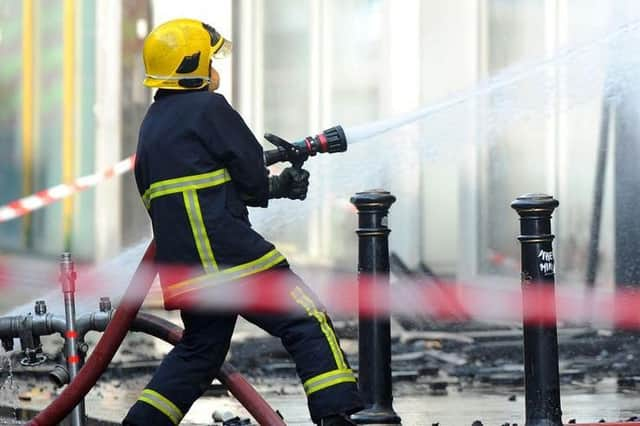Fewer firefighters and paramedics keeping Northampton safe than 10 years ago...but there are more police officers


Fewer firefighters and paramedics are serving in Northampton than a decade ago, figures suggest, but the number of police officers has increased.
While the country is still responding to the coronavirus pandemic, police, fire and ambulance staff unions are calling for more funding to protect frontline services.
Advertisement
Hide AdAdvertisement
Hide AdHome Office and NHS Digital figures show the equivalent of 2,782 full-time emergency workers were employed by organisations covering Northampton this year – 12% fewer than in 2011.
Among them were the 1,156 frontline police officers in Northamptonshire Police's ranks as of March 31, according to the Home Office data.
That was 7% more than at the same point in 2011, when there were 1,085 FTE officers, though figures prior to 2015 are estimates.
Across England, the number of officers has dropped by 5% in the last decade – while recorded crime was rising year-on-year in the years before the coronavirus pandemic hit.
Advertisement
Hide AdAdvertisement
Hide AdDifferent Home Office figures show that across Northamptonshire, the number of crimes recorded by police increased by 28%, from 49,288 in 2010-11, to 62,943 in 2019-20.
The figure fell to 61,222 in 2020-21, when crime levels nationally were significantly impacted by coronavirus lockdowns.
The Police Federation of England and Wales, which represents officers, said the Government's promise of 20,000 new police officers by the end of 2023 does not go far enough.
A spokesman said: “An increase in the number of police officers is desperately needed, particularly given that the population in England and Wales has grown by 4 million in the last decade.
Advertisement
Hide AdAdvertisement
Hide Ad“In addition, the time officers spend dealing with non-crime issues, helping vulnerable people and those in mental health crises, has also increased.”
Meanwhile, the Northamptonshire Fire and Rescue Service had the equivalent of 382 full-time firefighters responding to emergencies as of the end of March – 185 fewer than in 2011.
Around 9,500 firefighters were lost across England over the same period – a 23% drop – with every fire and rescue service experiencing reductions.
While the number of incidents attended overall has steadily been declining nationally, the response time to fires has increased.
Advertisement
Hide AdAdvertisement
Hide AdThe Fire Brigades Union, which represents firefighters, said anyone working in the public sector frontline would agree that "austerity is not over".
Matt Wrack, FBU general secretary, said the sector had been calling for new funding for years.
He added: “For fire and rescue, every pound cut from our budget means a greater likelihood of smaller crew numbers, fire stations shutting, and the loss of resources such as fire engines.
“In turn this all means longer response times to incidents, and a greater risk to lives, property, heritage and the environment.”
Advertisement
Hide AdAdvertisement
Hide AdDecreases were also seen for the East Midlands Ambulance Service NHS Trust, which saw its ambulance staff numbers fall 17% from 1,505 in September 2011, to 1,244 as of July this year.
But the NHS Digital figures show the number of ambulance staff operating in trusts across England dropped by 3% in 10 years.
Unison, which represents ambulance workers, said fewer staff means lengthy waits for ambulances.
Colm Porter, the union's national ambulance officer, said: "Staff end up working across wider areas, their shifts persistently overrun, stress increases and burnout is common.
Advertisement
Hide AdAdvertisement
Hide Ad"Queuing ambulances outside hospitals and long patient delays have become the norm."
The Government said it had "consistently" given emergency services the resources they need to keep people safe.
A spokesman added: “We have recruited more than half of the promised 20,000 additional police officers, invested £2.3 billion this year to support the work of firefighters and NHS England have given ambulance trusts an extra £55 million to boost staff numbers ahead of winter.”